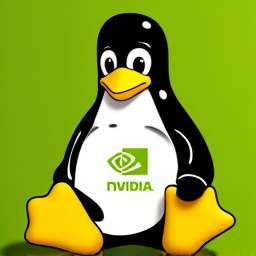In a significant move, NVIDIA has announced the open-sourcing of its GPU kernel modules for Linux, marking a new era for users and developers alike. This bold step promises to bring numerous benefits, including improved performance, enhanced security, and increased flexibility. In this article, we’ll delve into the details of this development, exploring what it means for the Linux community and how you can take advantage of these open-sourced kernel modules.
A Brief History: NVIDIA’s Journey to Open-Source
In May 2022, NVIDIA took its first steps towards open-sourcing by releasing a set of Linux GPU kernel modules under dual GPL and MIT licensing. Initially targeting datacenter compute GPUs, the release also included GeForce and Workstation GPUs in an alpha state. At the time, NVIDIA promised that more robust and fully-featured GeForce and Workstation Linux support would follow in subsequent releases.
The Present: Achieving Parity with Proprietary Counterparts
Fast-forward to today, and NVIDIA has made significant strides in its open-source journey. The company has achieved equivalent or better application performance with its open-source GPU kernel modules compared to its proprietary counterparts. This achievement is a testament to the power of community-driven development.
Key Benefits: What Open-Source Kernel Modules Mean for Linux Users
So, what do these open-sourced GPU kernel modules mean for Linux users? Here are some key benefits:
- Improved Performance: With the open-source modules, Linux users can expect improved performance and responsiveness from their NVIDIA GPUs.
- Enhanced Security: By making the kernel modules open-source, NVIDIA is allowing the community to scrutinize and improve the code, leading to enhanced security and fewer vulnerabilities.
- Increased Flexibility: The open-source nature of the kernel modules allows developers to customize and modify them to suit specific use cases, leading to increased flexibility.
- Better Support for Emerging Technologies: Open-source kernel modules will enable better support for emerging technologies like AI, machine learning, and cloud computing.
- Community-Driven Development: With the source code available, the community can contribute to the development of the kernel modules, driving innovation and improvement.
Using the Open-Source Modules: A Step-by-Step Guide
So, how can Linux users take advantage of these open-sourced GPU kernel modules? NVIDIA provides a simple installation process using package managers like apt, dnf, or zypper. Here are some examples:
- Ubuntu:
sudo apt-get install nvidia-open - Fedora:
sudo dnf module install nvidia-driver:open-dkms
Tips and Tricks for Optimizing Performance
To get the most out of your NVIDIA GPU with open-source kernel modules, follow these tips:
- Update Your Kernel: Ensure you’re running the latest kernel version to take advantage of the latest features and performance enhancements.
- Adjust Power Settings: Tweak your power settings to balance performance and power consumption.
- Monitor Performance: Use tools like
nvidia-smito monitor your GPU’s performance and adjust settings accordingly.
Conclusion: A New Era for Linux Users
NVIDIA’s decision to open-source its GPU kernel modules is a significant step forward for the Linux community. With improved performance, enhanced security, and increased flexibility, these open-sourced modules are set to revolutionize the way Linux users interact with their NVIDIA GPUs.




